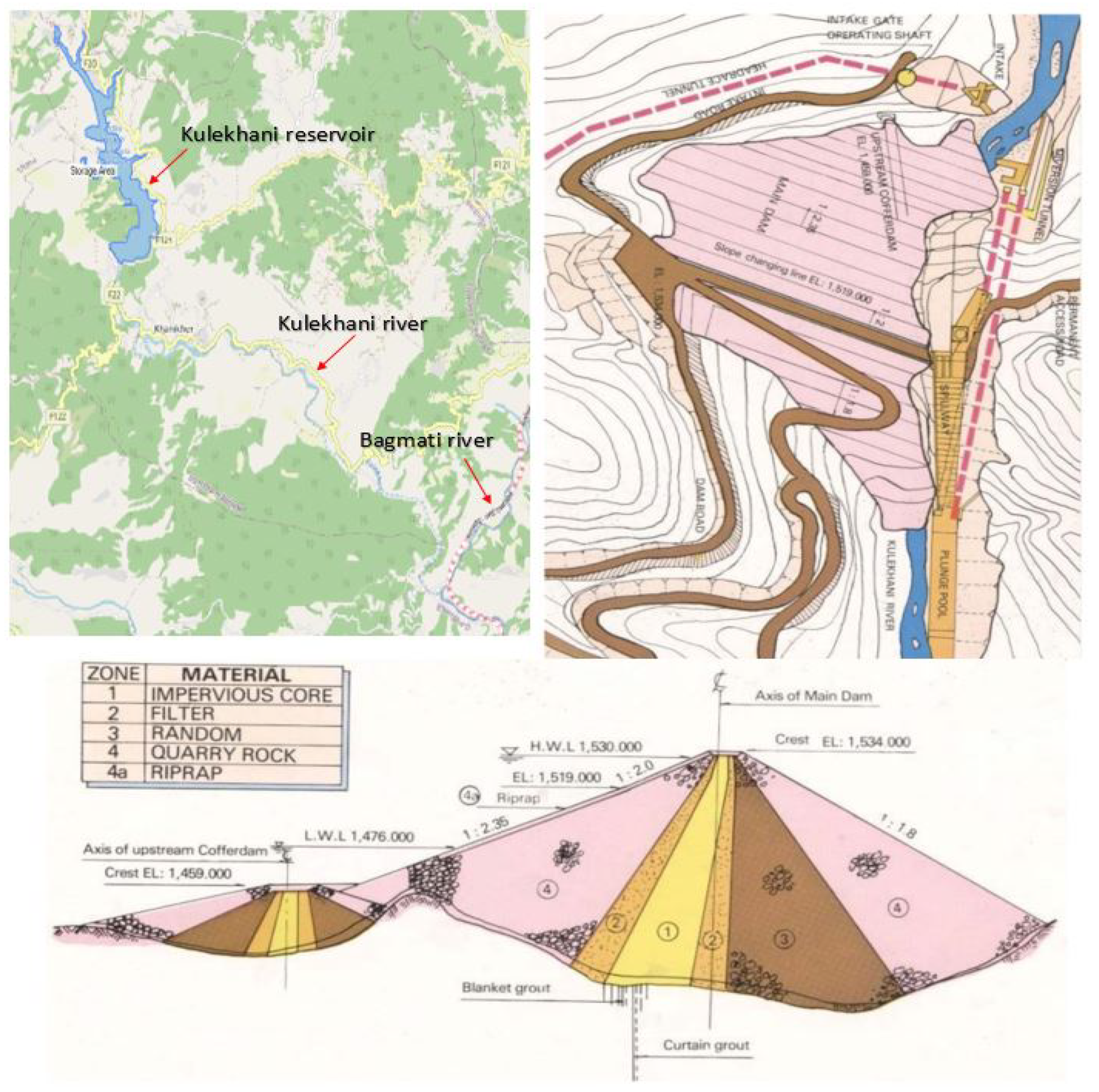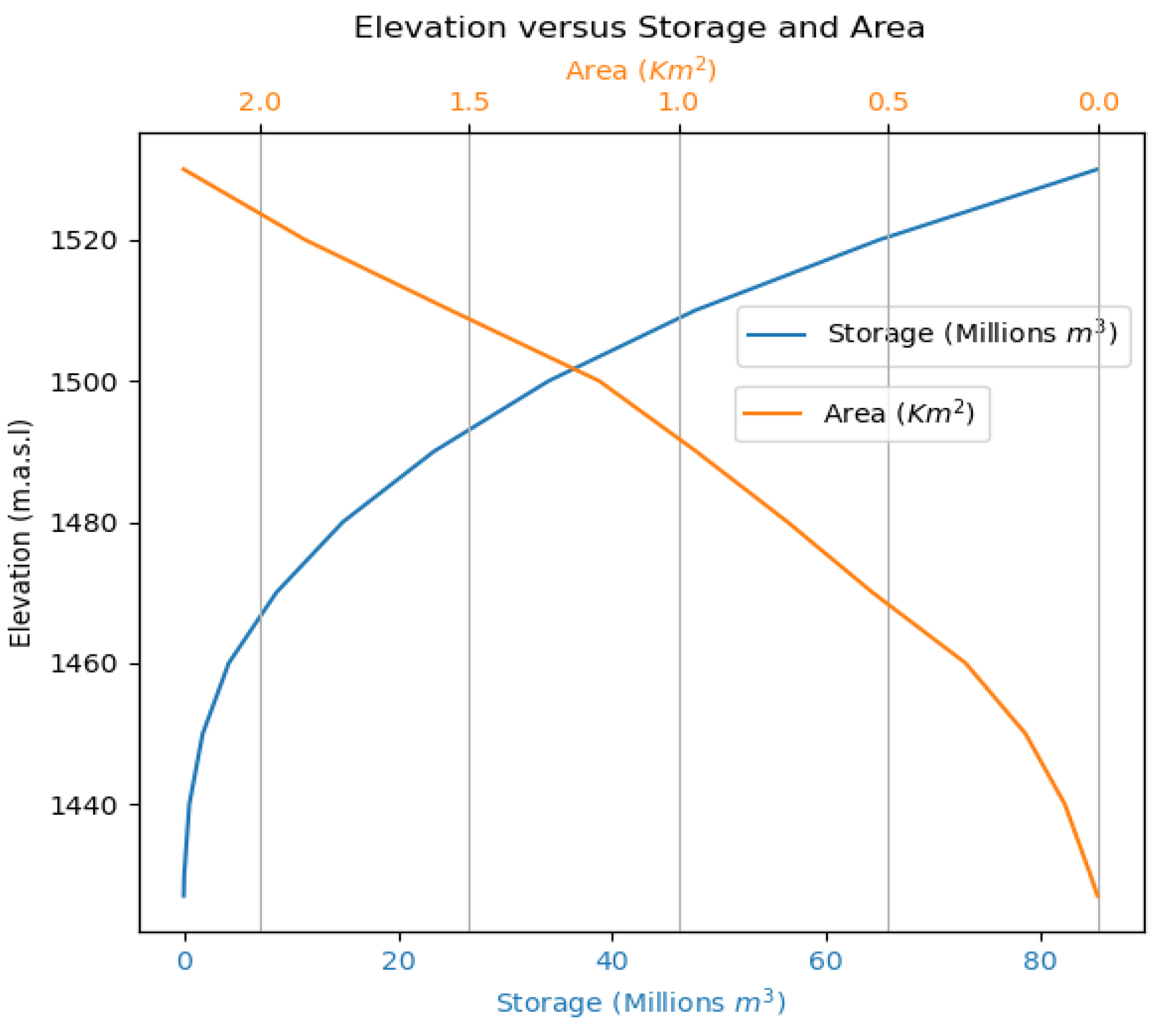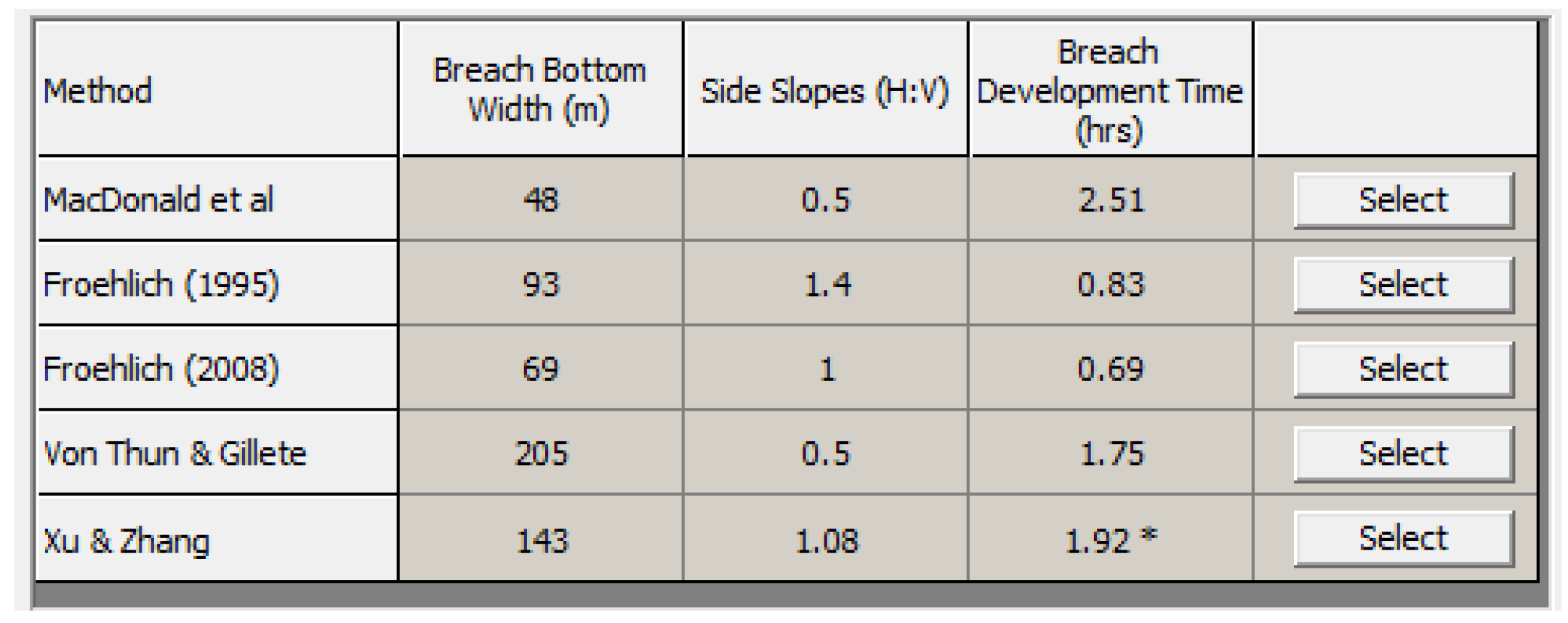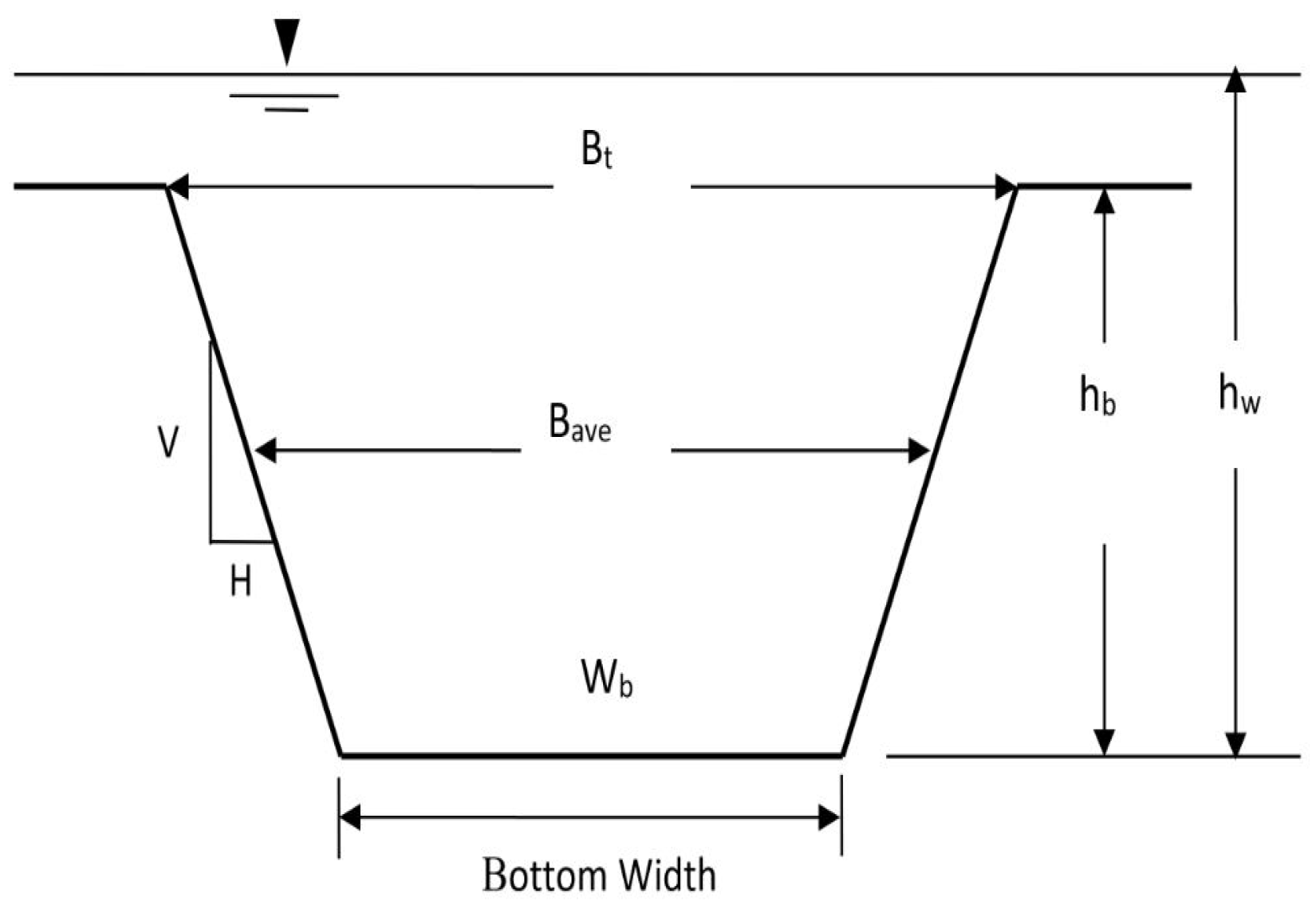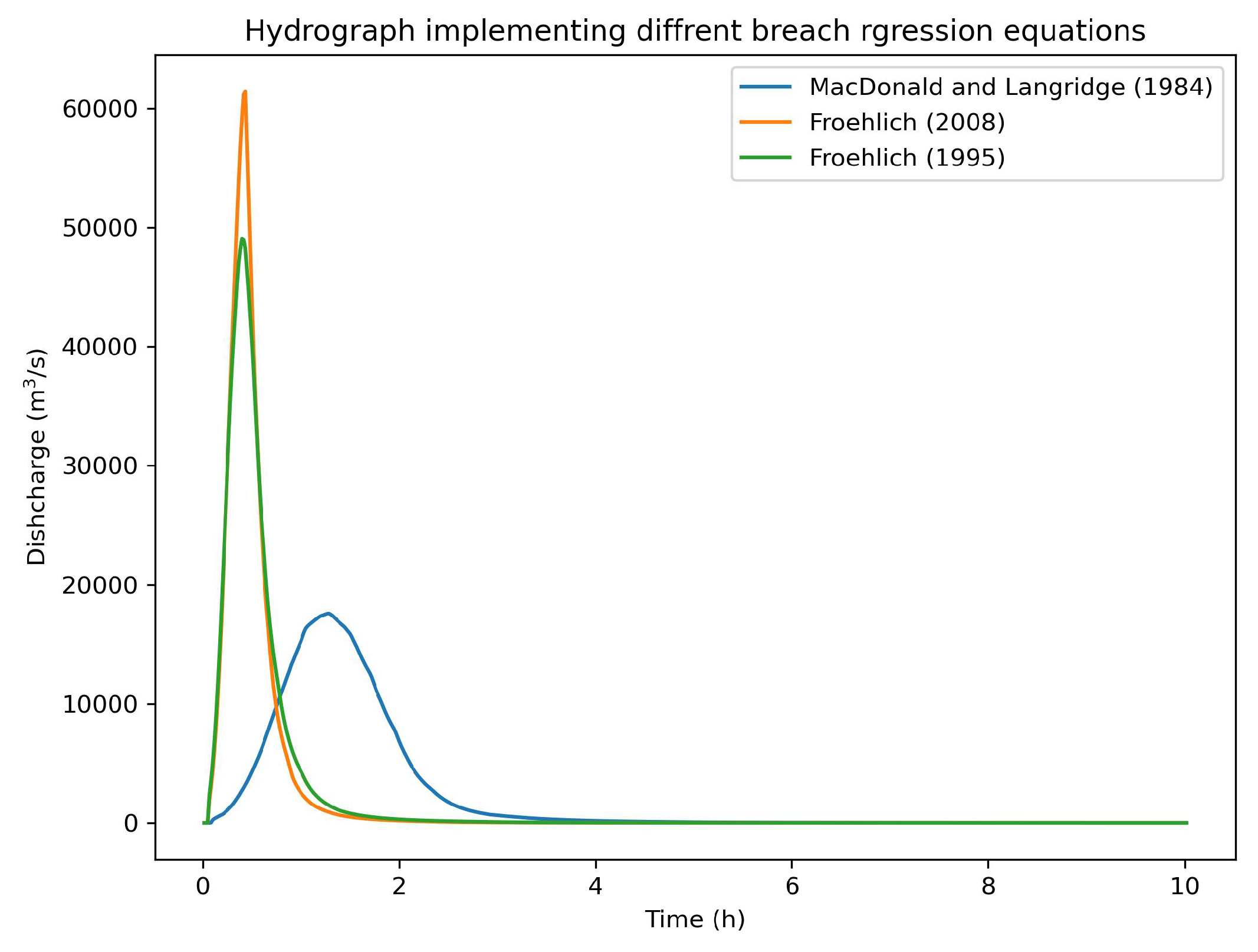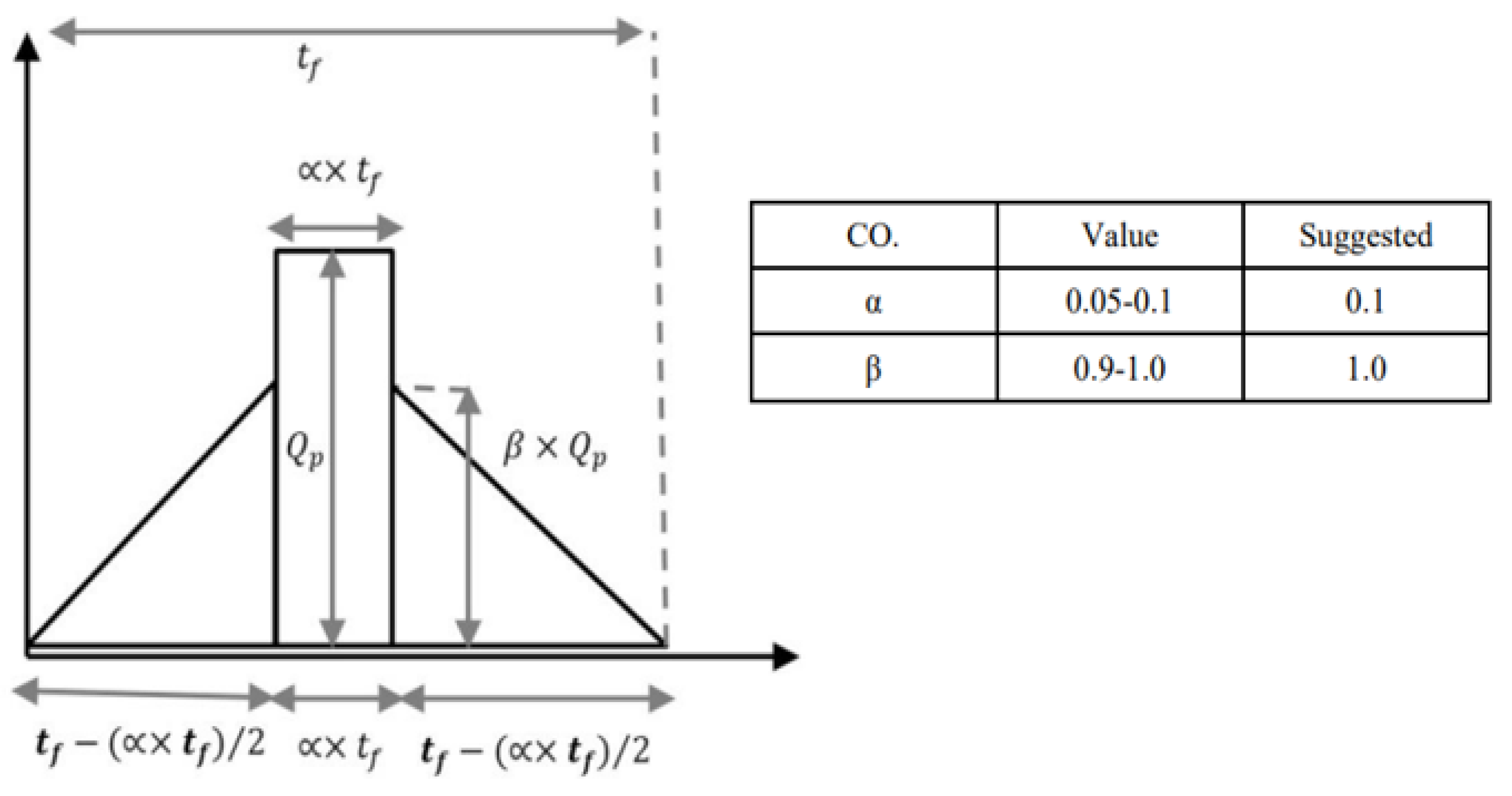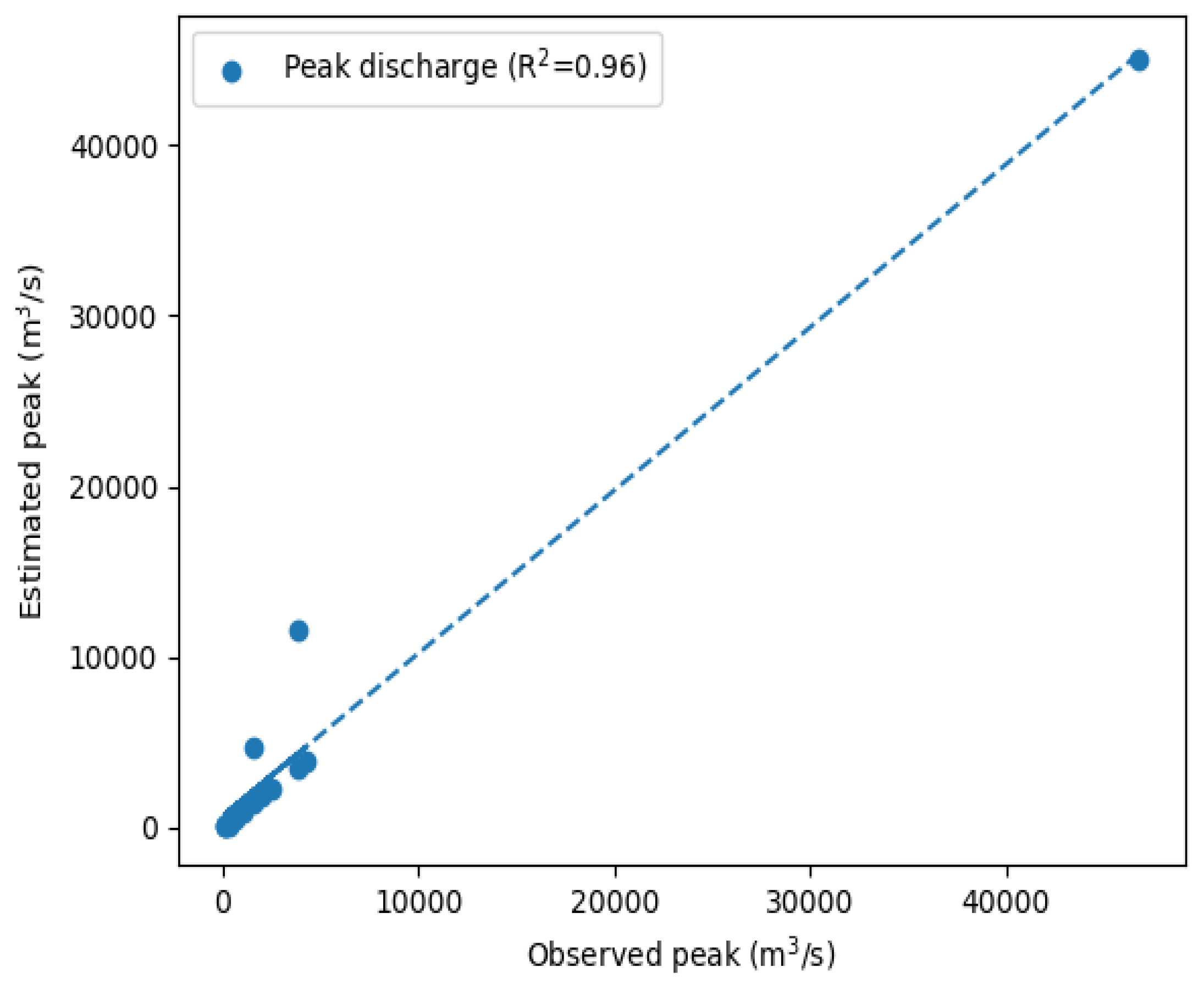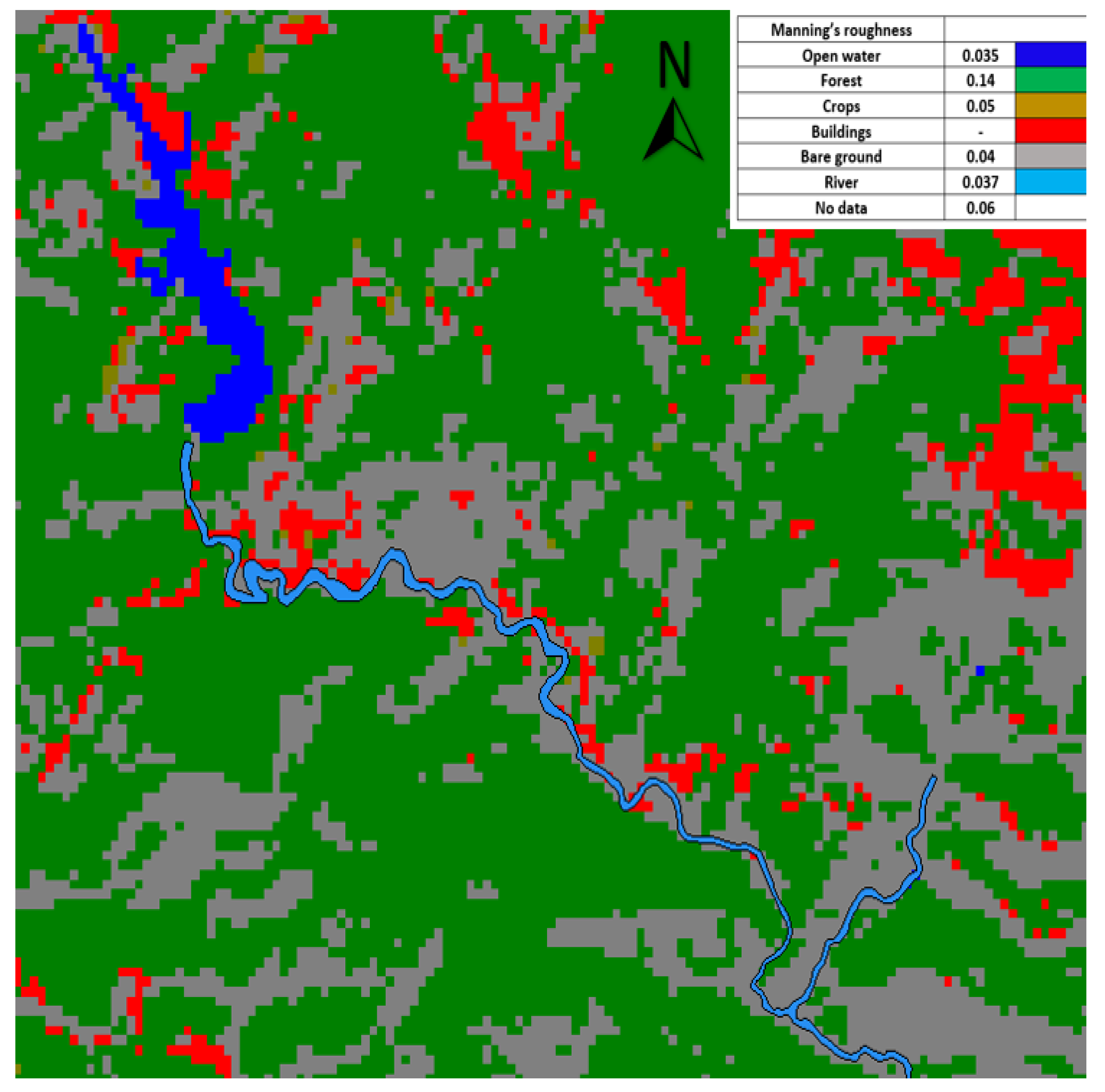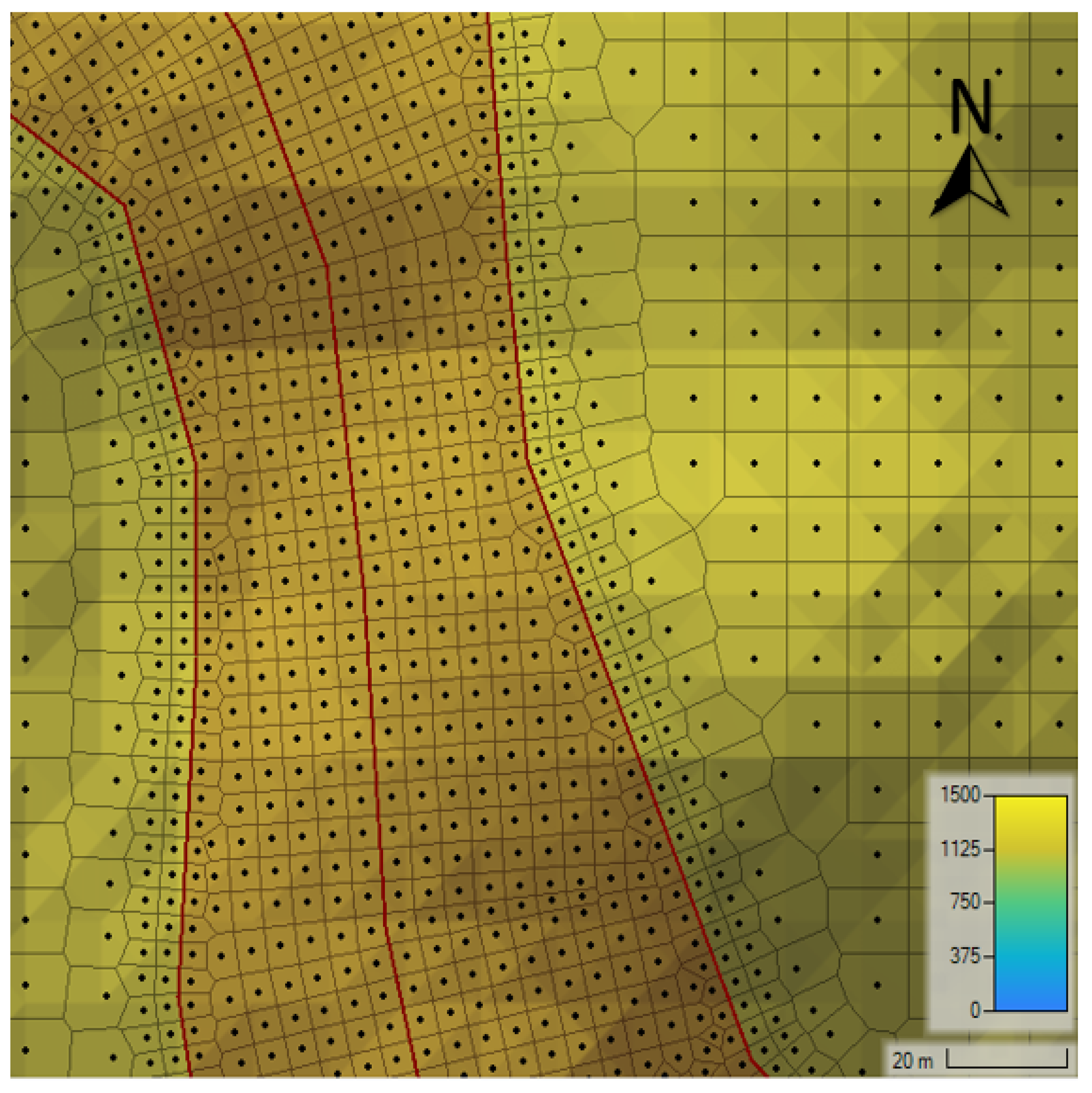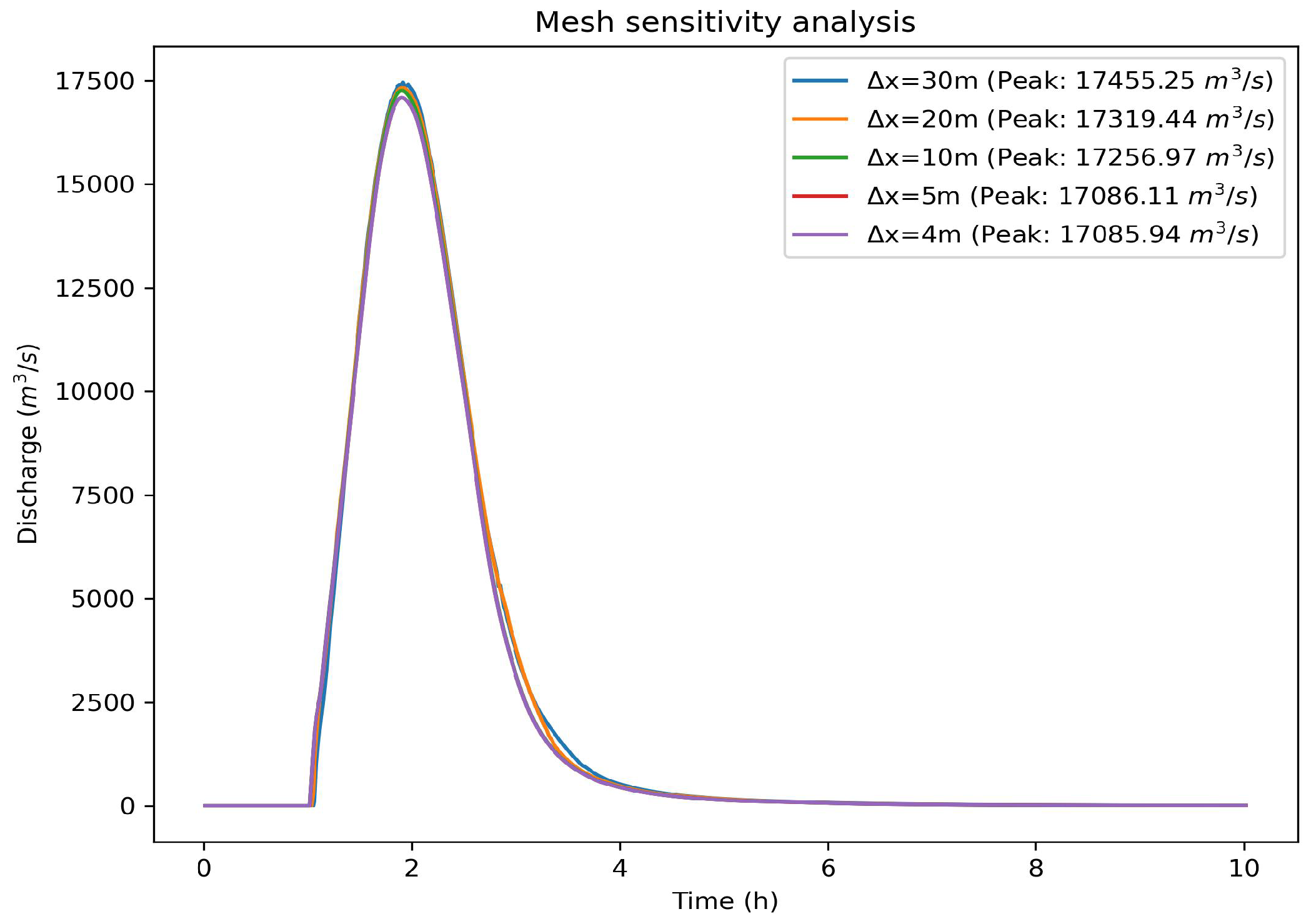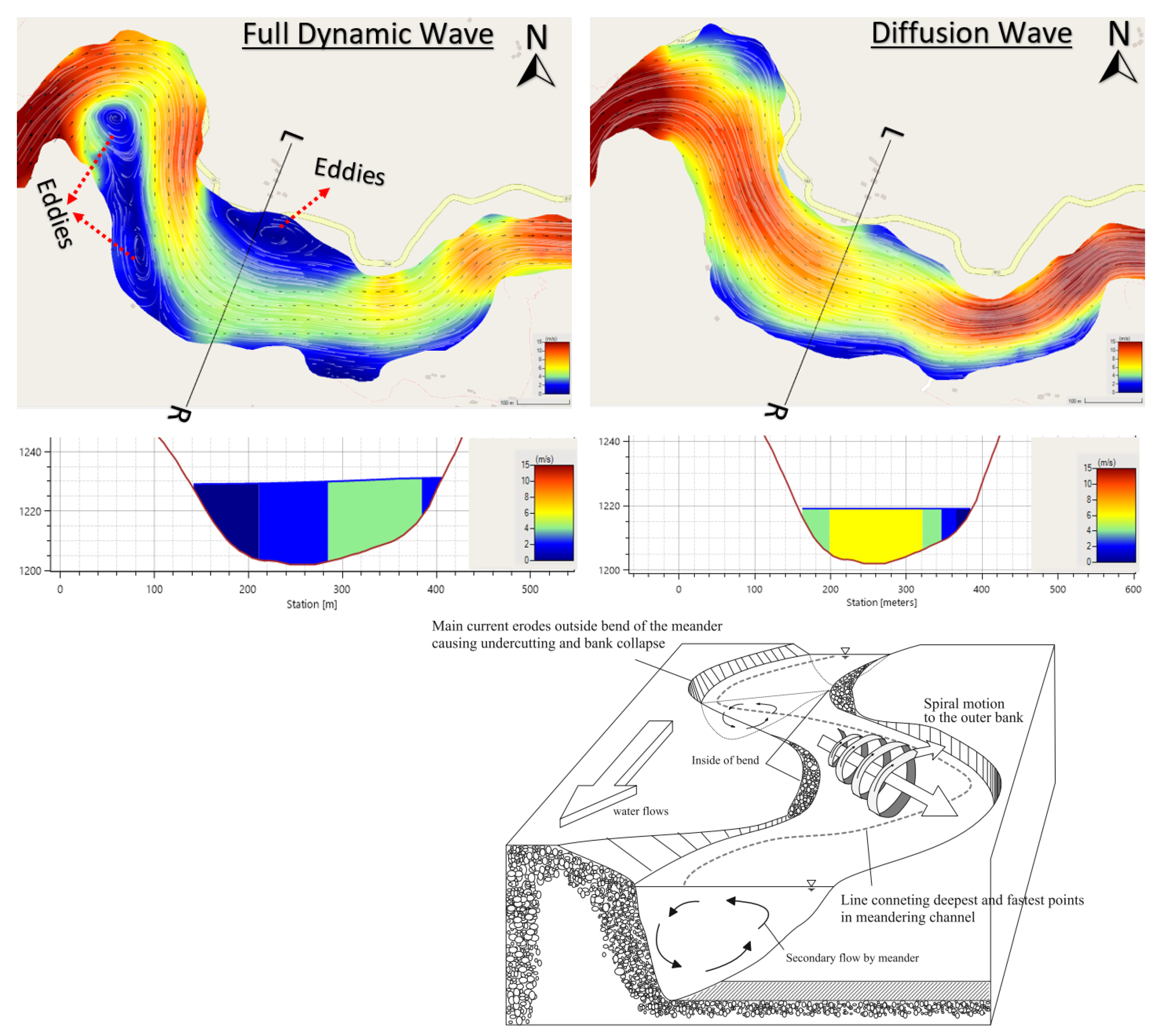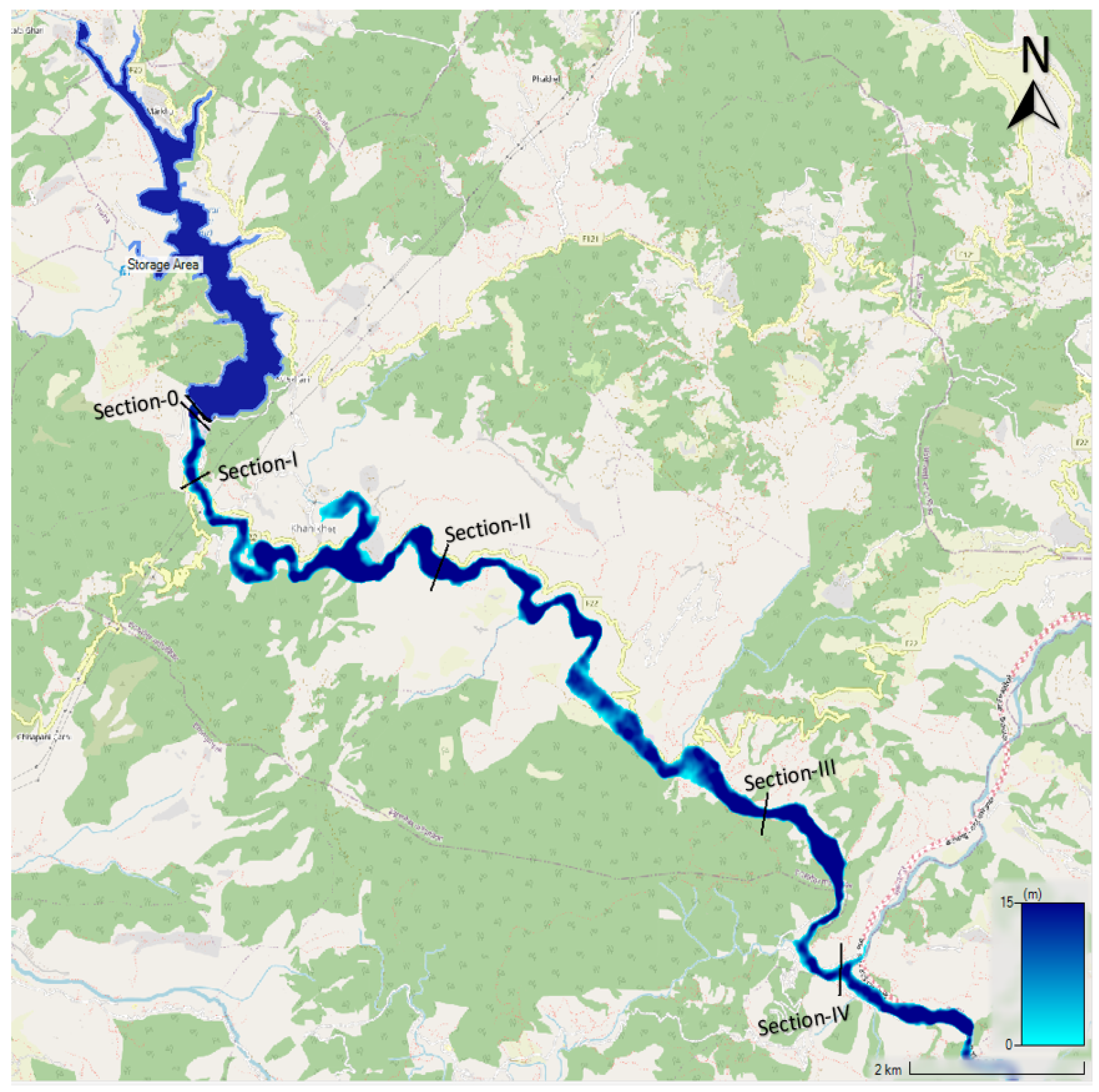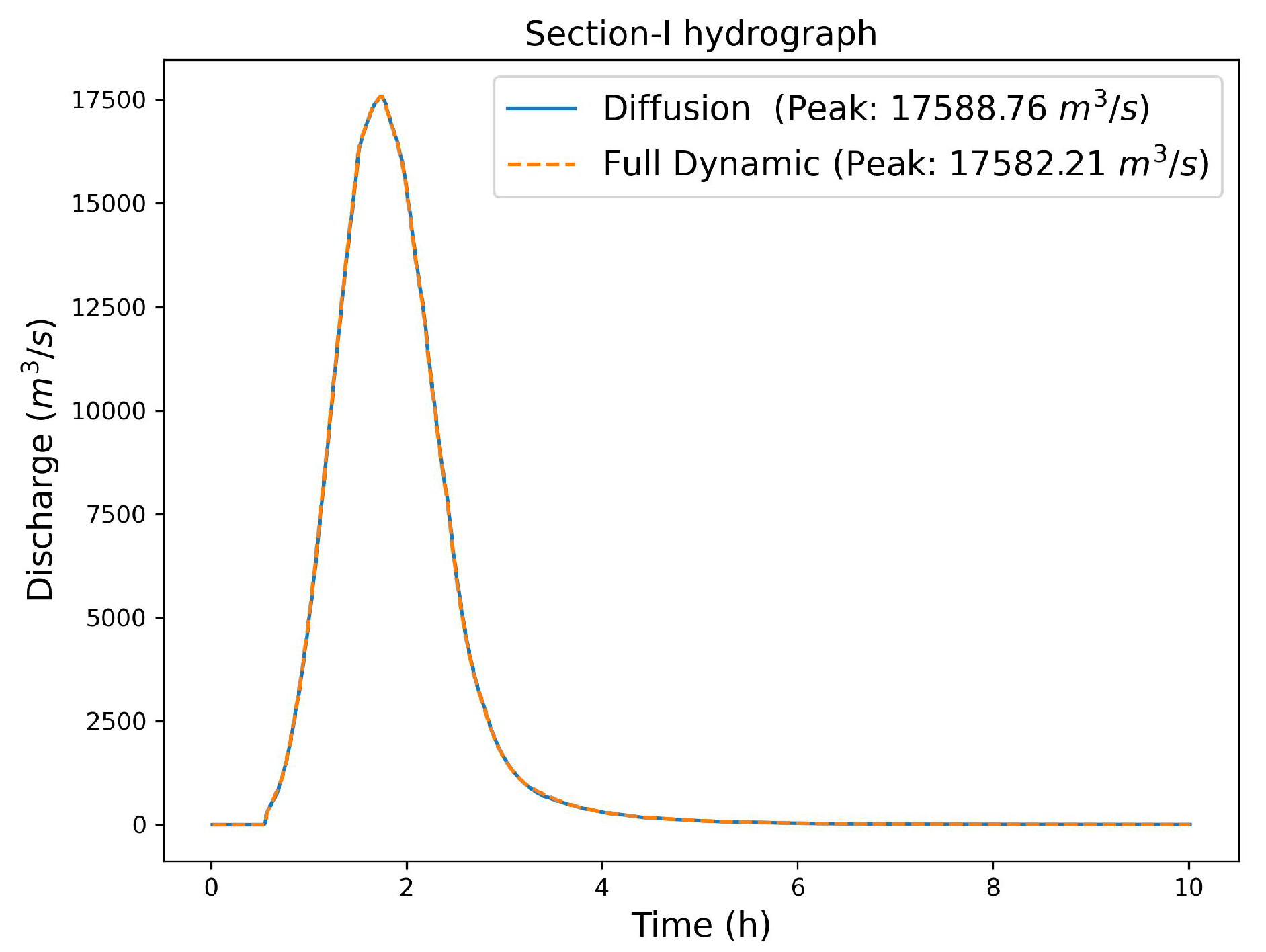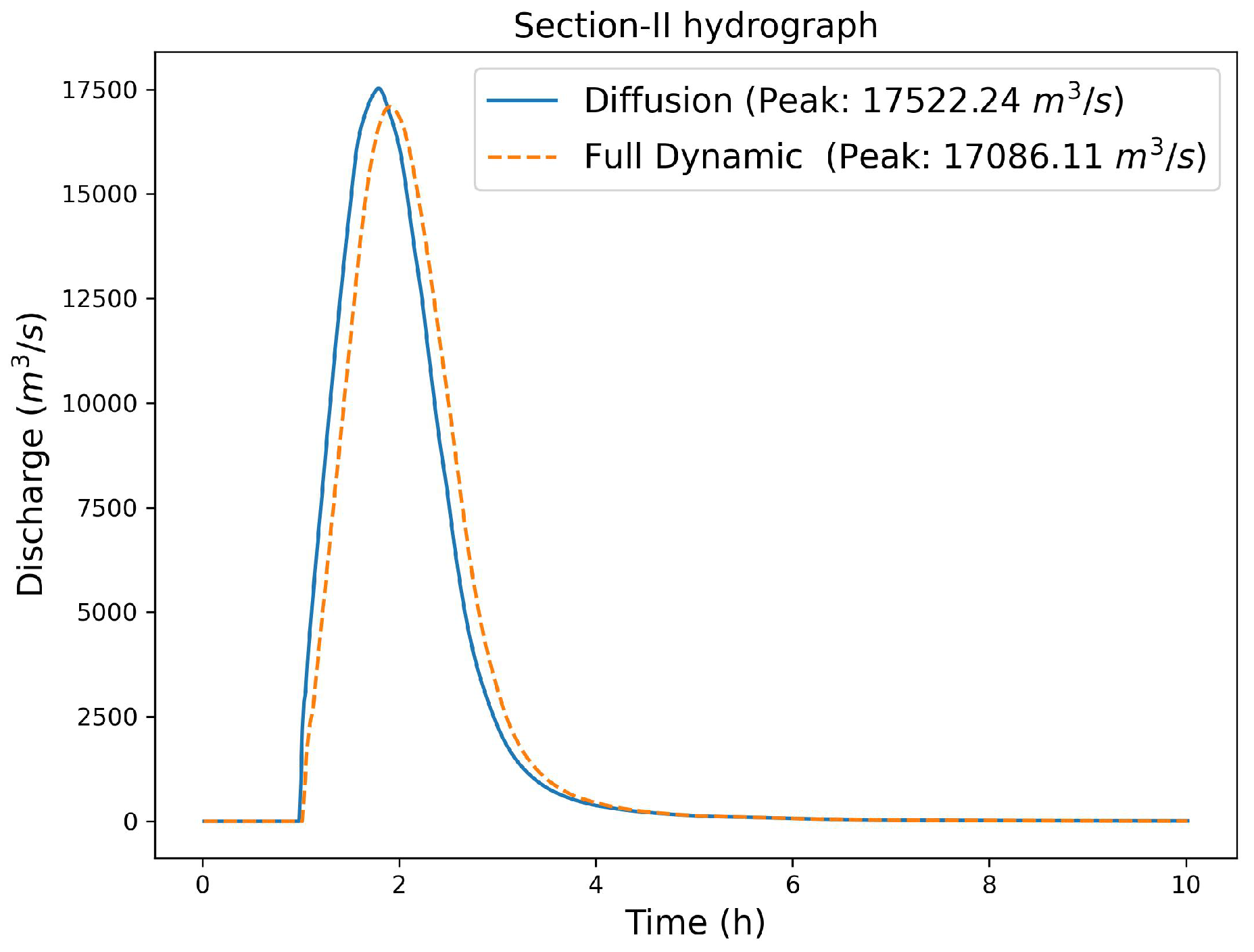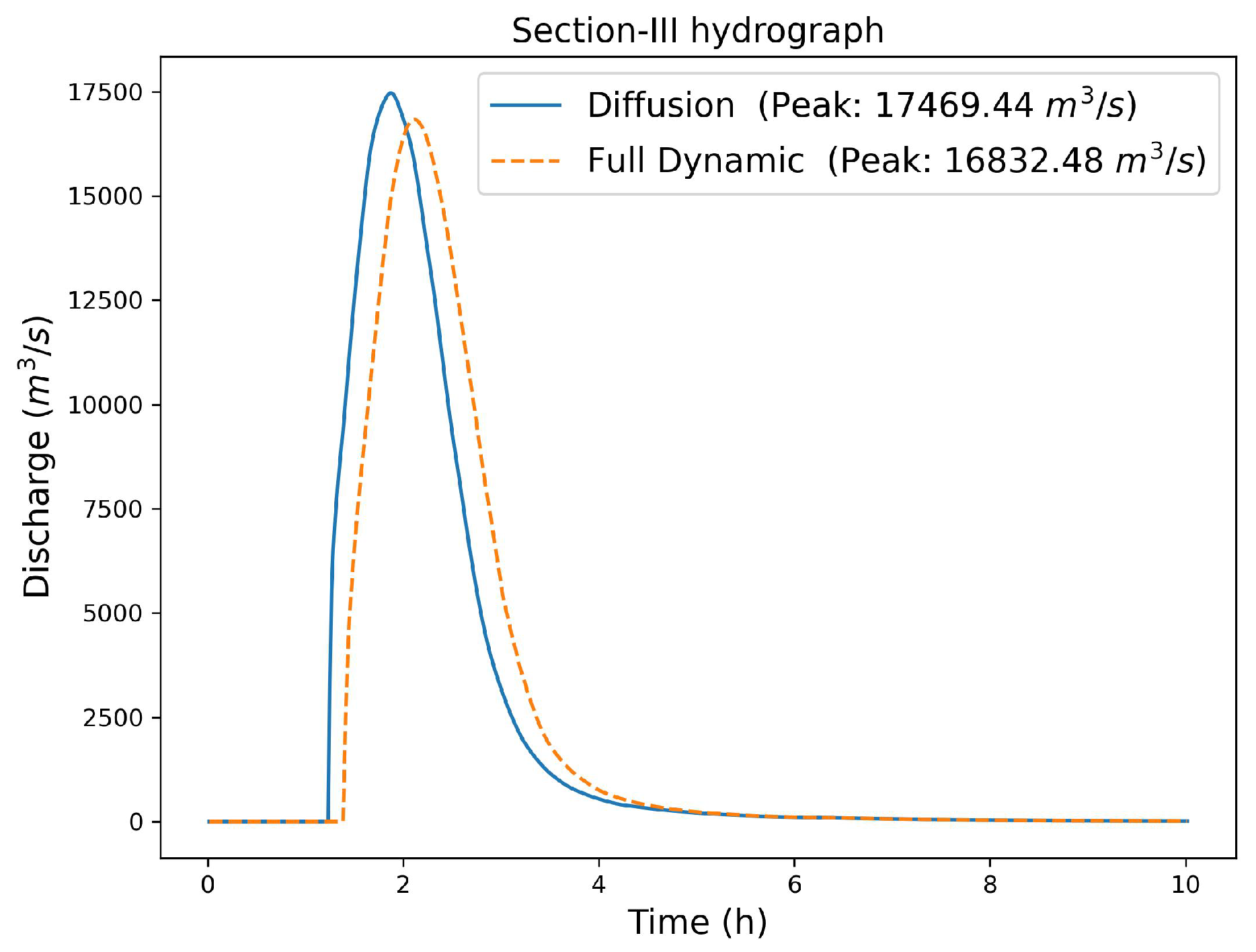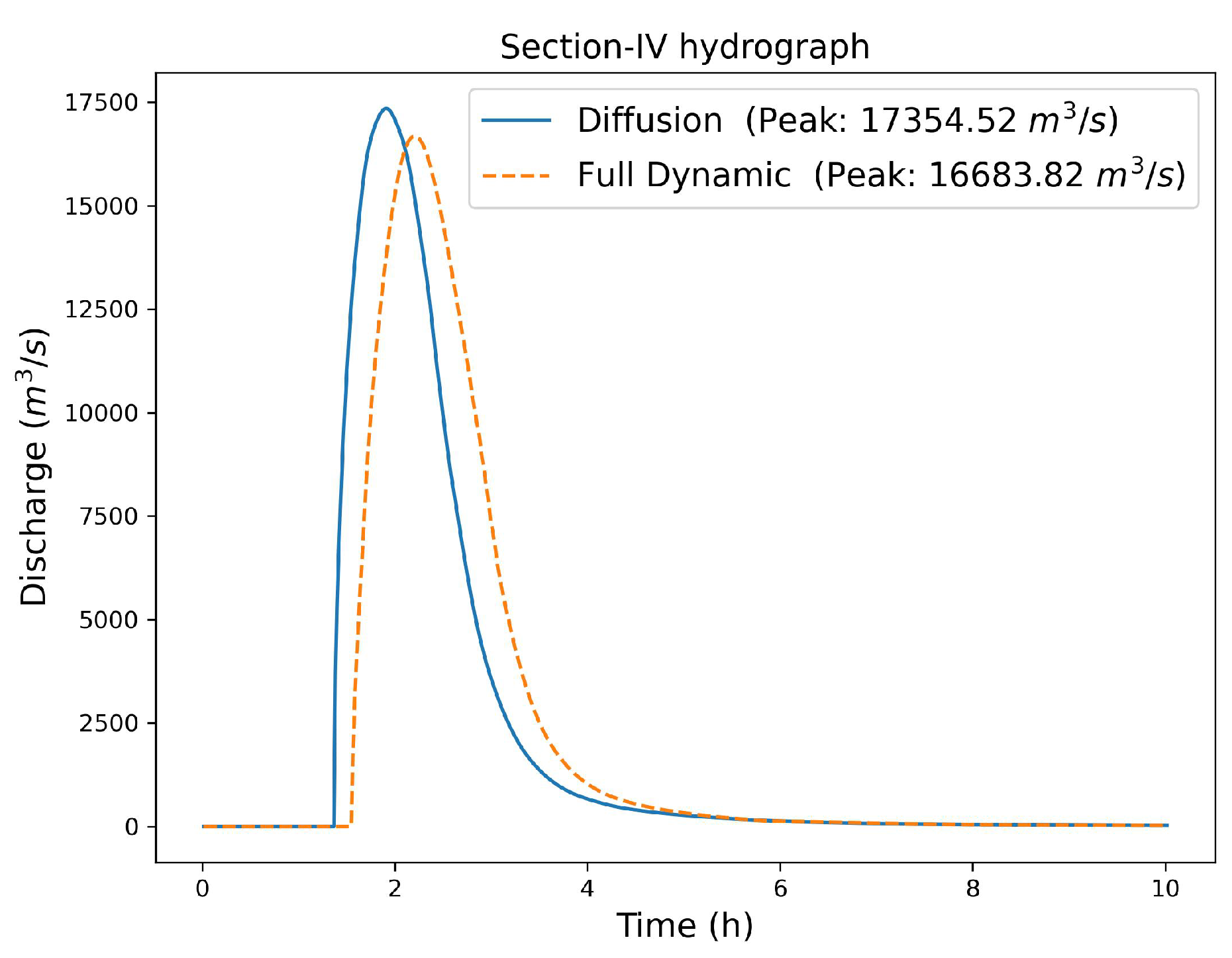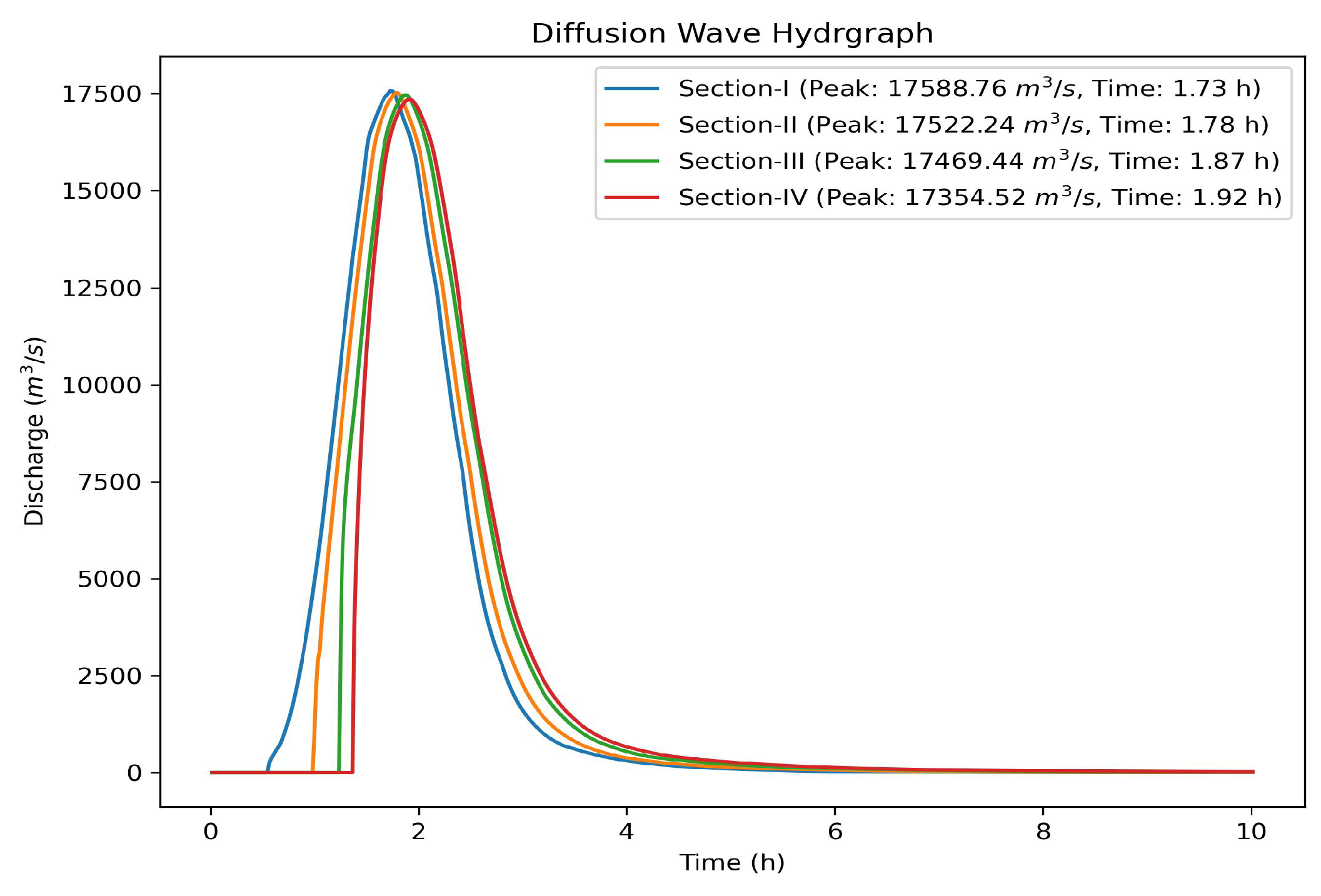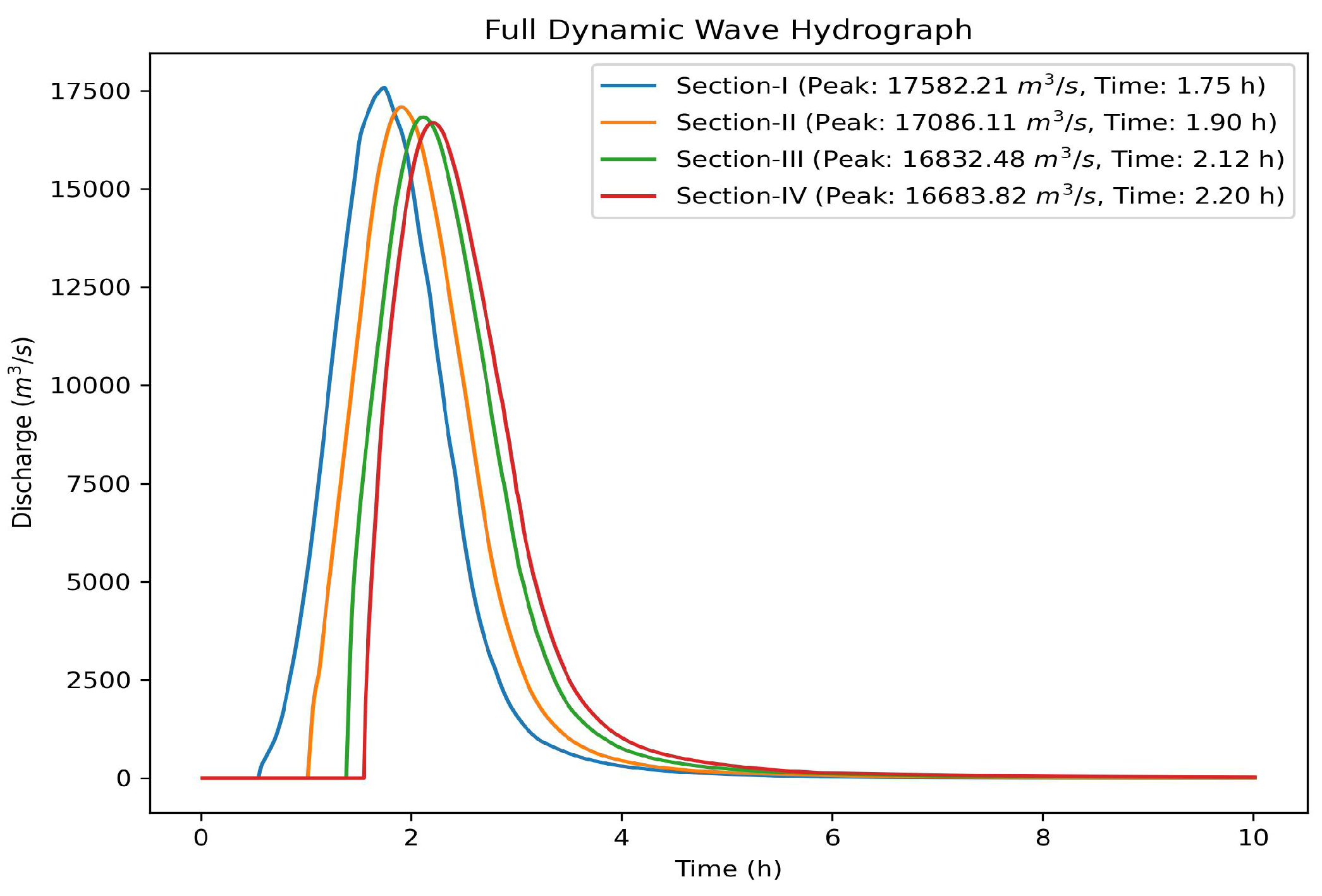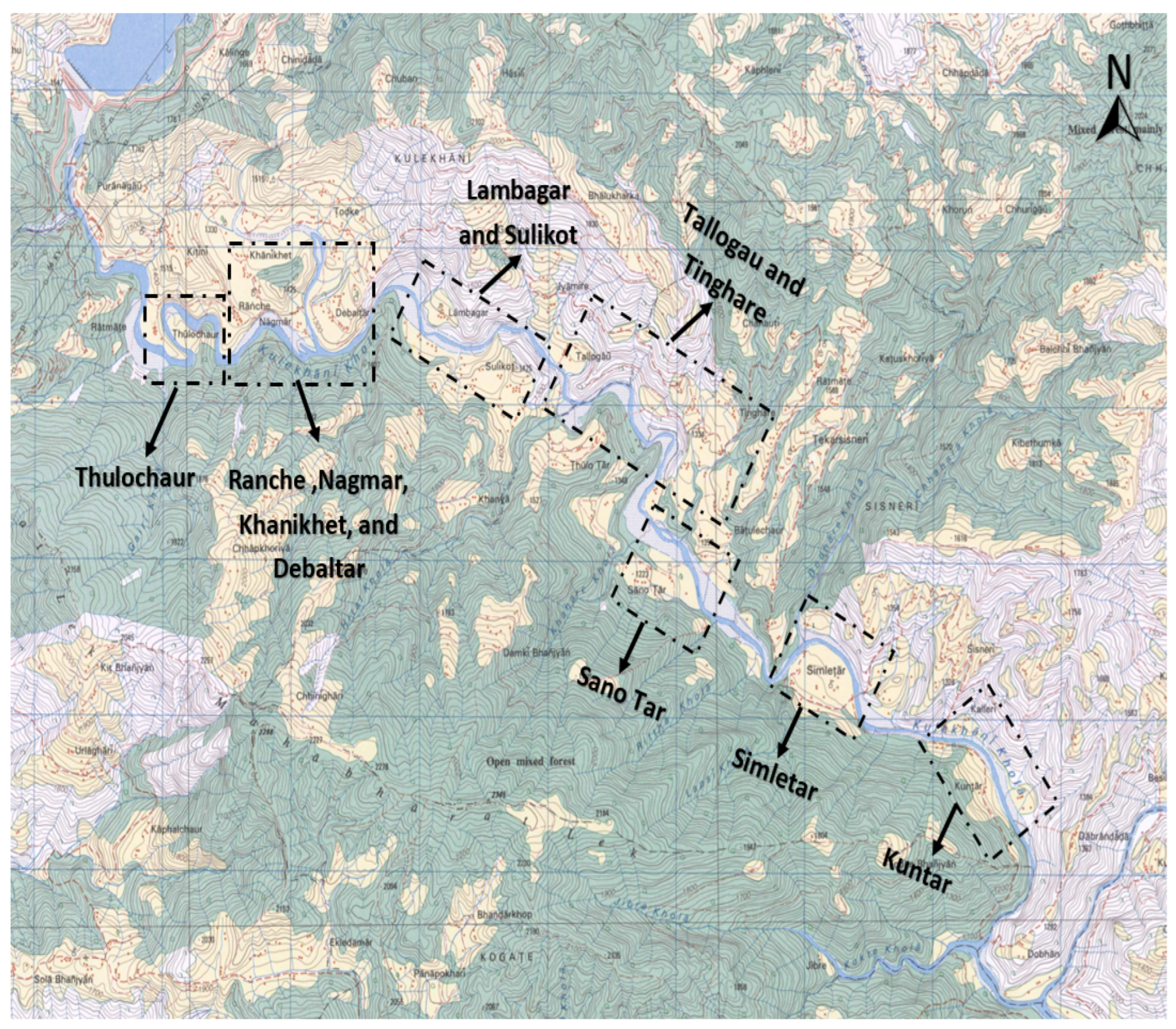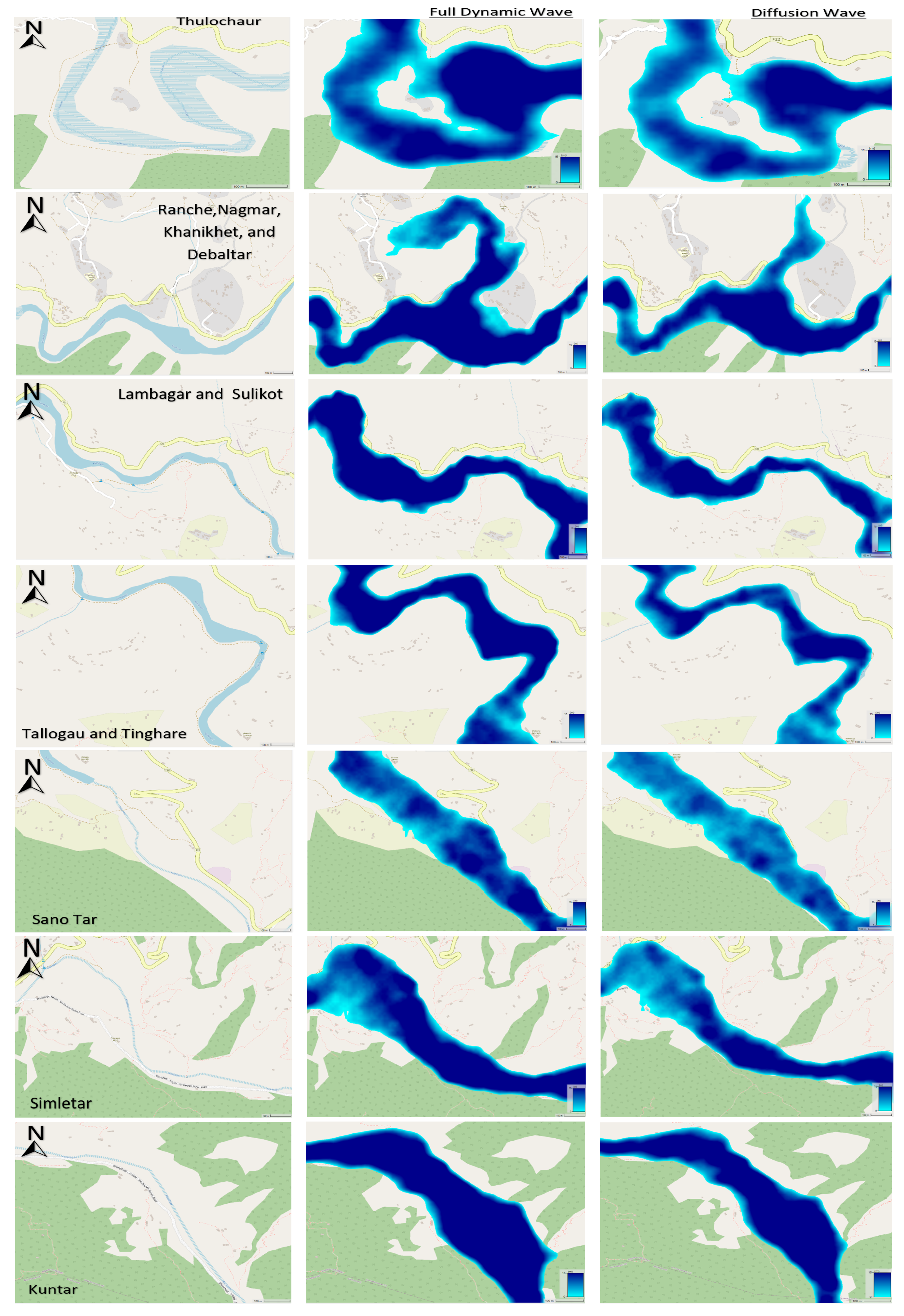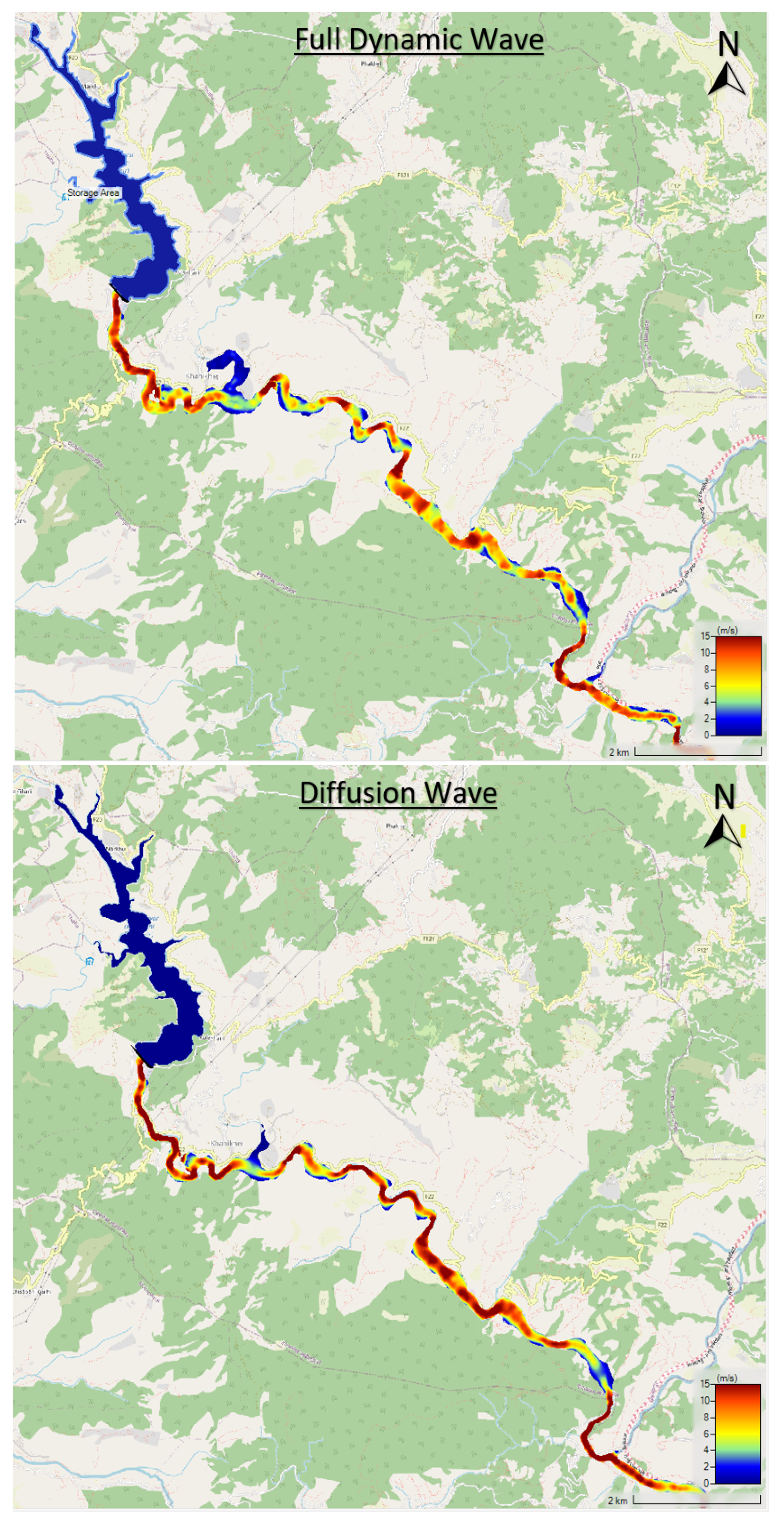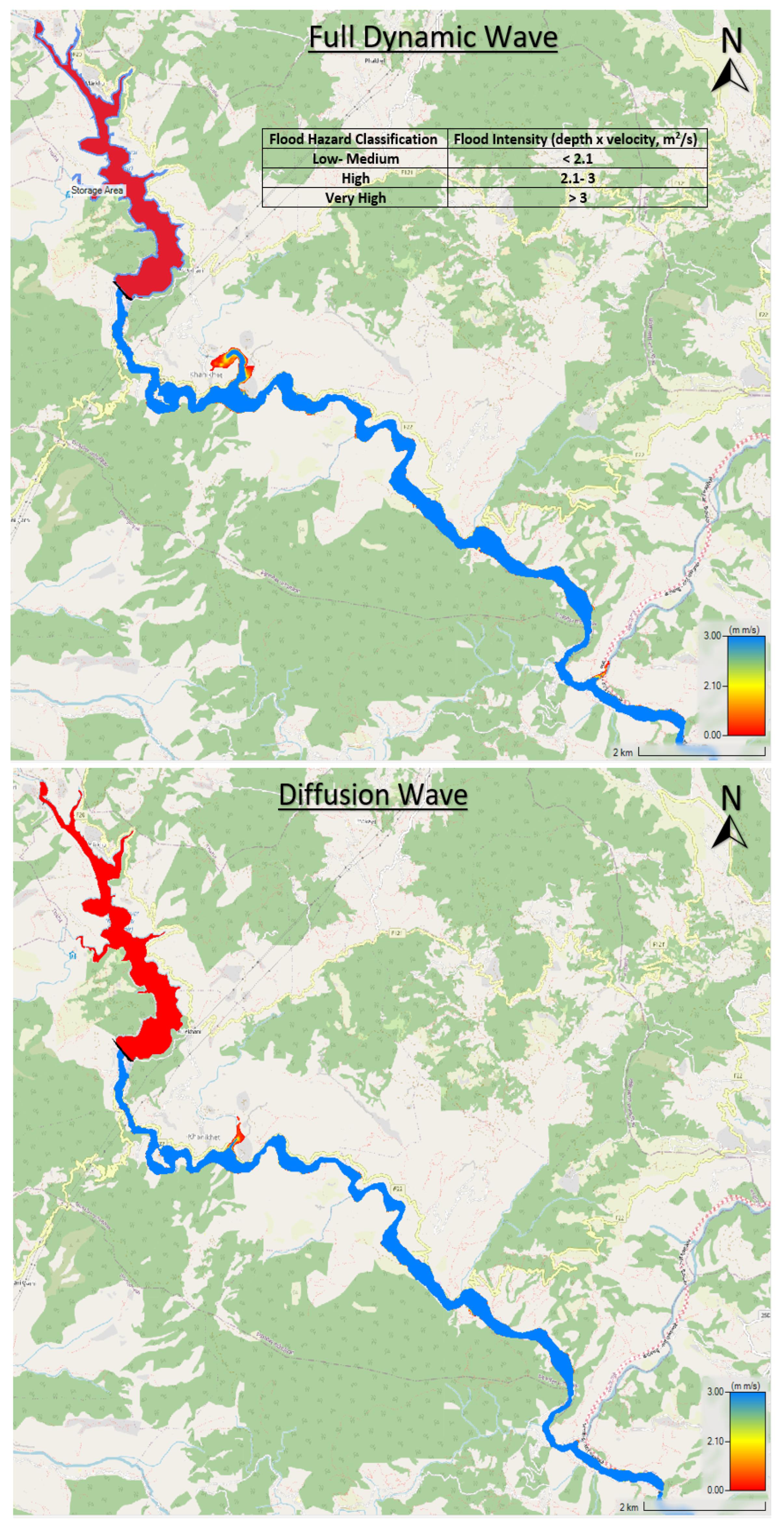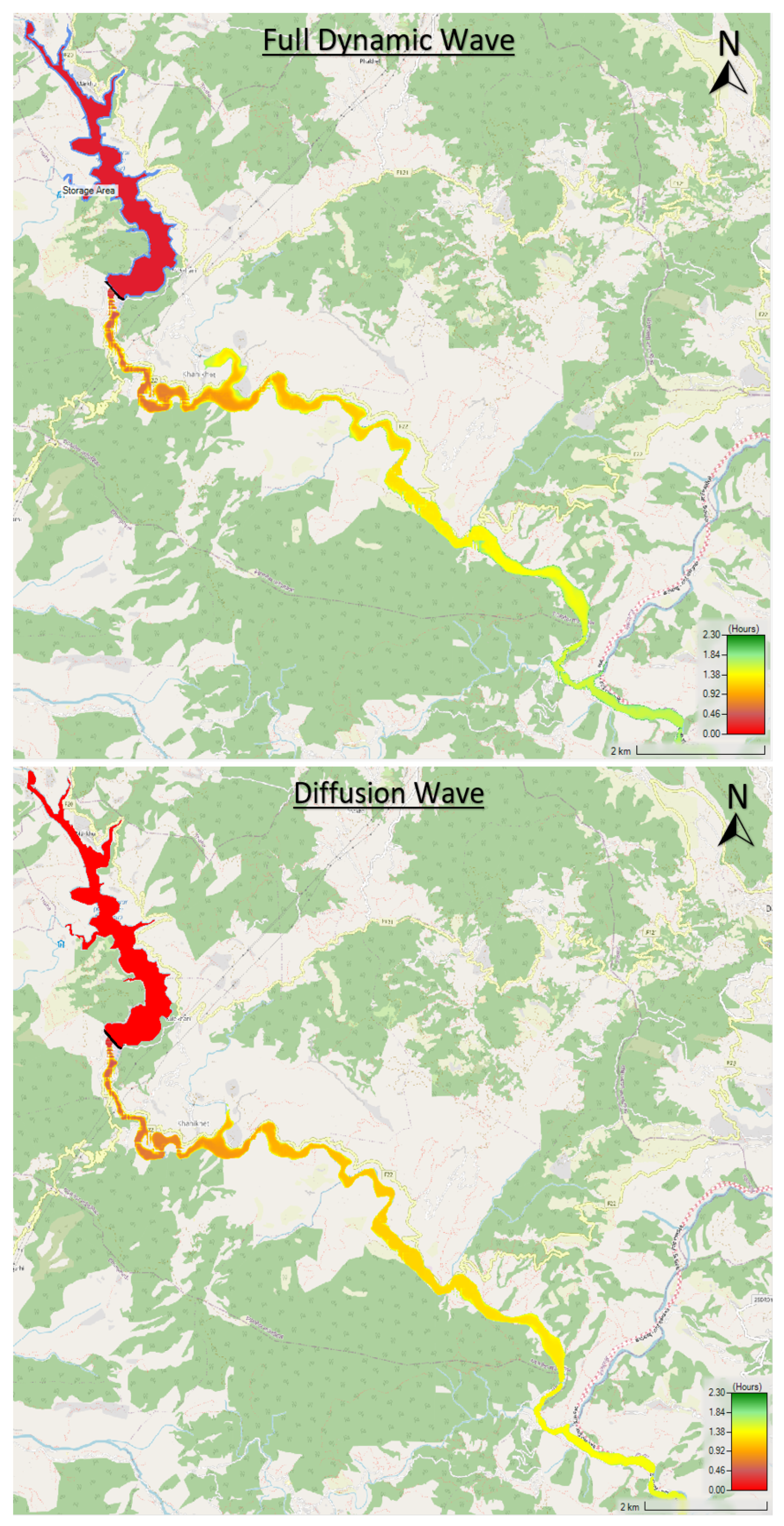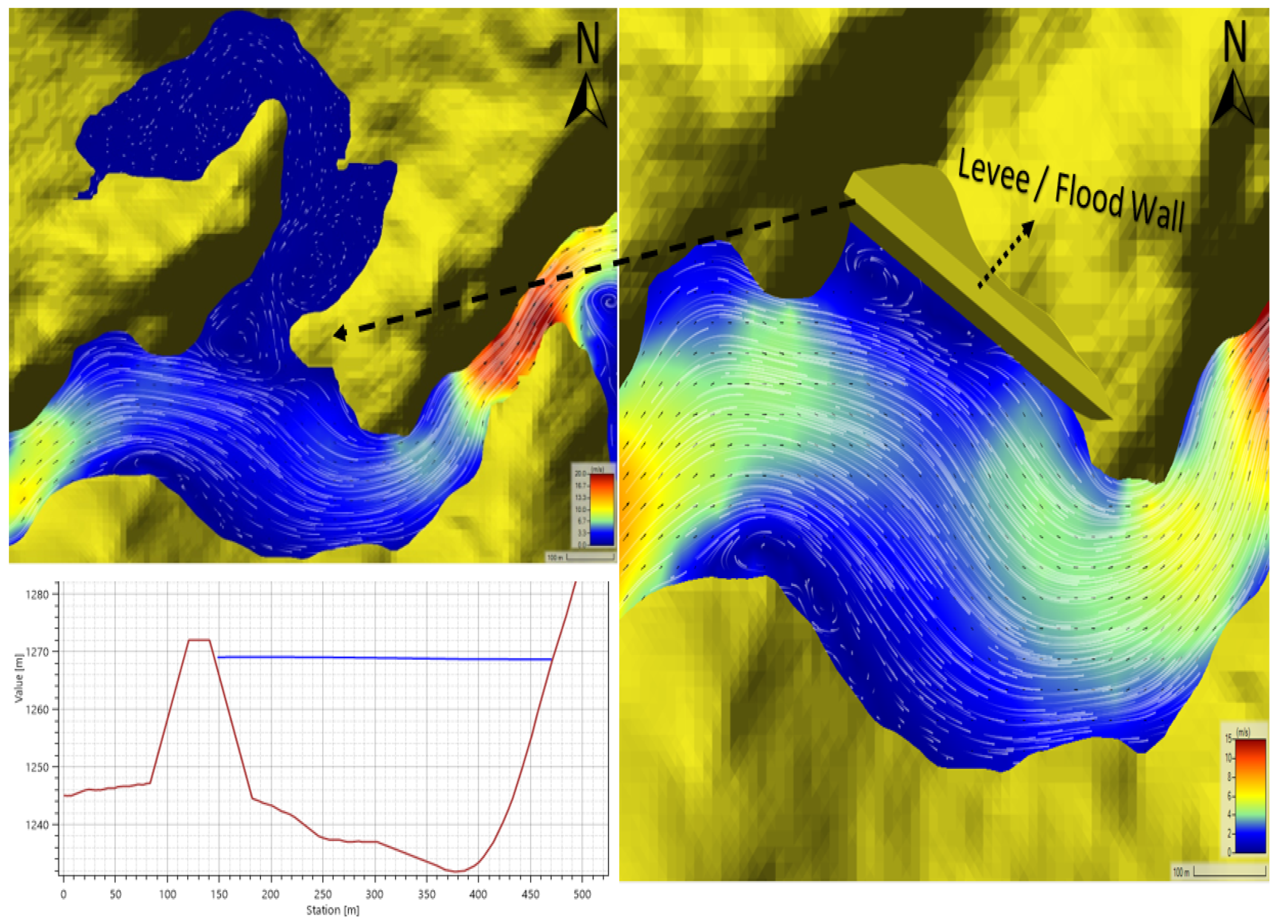1. Introduction
Over the last decades, multipurpose dams have been built for water supply, flood control, hydropower generation, irrigation, recreation, and tourism. Sadd el-Kafara Dam, Egypt[
1], and Jawa Dam, Jordan[
1,
2] are some of the oldest dams in the world built over 2000 years ago. People have been living near the river for a long time, as the development of human civilizations is closely tied to the availability of water. Rivers are considered a consistent source of fresh water, providing fertile land for agriculture, and inland navigation for trades[
3]. Living near a river might be vulnerable due to recurring flooding events, bank erosion, and other natural hazards. The downstream flooding events due to the dam breach have a huge potential for widespread devastation, significant natural hazards, loss of property, and life-threatening to human life[
4]. Proper awareness and planning are essential for people living riverfront to ensure safety and resilience against natural hazards. Johnstown Flood (1889)[
5,
6] due to the South Fork Dam breach, is considered one of the deadliest floods due to dam breaches in U.S. history where nearly two thousand people were killed, and several villages were affected by destroying property. Similarly, Vajont Dam Disaster (1963)[
7], Teton Dam failure (1976)[
8], Banqiao Dam failure (1975)[
9], Taum Sauk Dam failure (2005)[
10], Malpasset Dam failure (1959)[
11] are some of the dam breaks that have created serious threats to the people and property at the downstream side of the dam. Earthfill dams experience different modes of failure such as overtopping due to insufficient storage capacity and inadequate spillway facilities for excess flow, piping due to internal erosion creating channels within the dam, and seismic response failures are the most common failures[
10,
12].
Arthur Casagrande[
13], Ralph Peck [
14], and Karl Emil Hilgard[
15] are some of the pioneers who have significant contributions to the dam breach study and modeling. Vaskinn, K. A. and Hassan, M. A. A. M. (2004) [
16] conducted a large-scale physical breach formation model test to identify different failure processes such as cracking, arching (pipe formation), head cut formation, and progression of the breach. Kouzehgar. K and Babaeian Amini, A. (2021)[
17] carried out a dam-break physical model test due to overtopping considering a homogeneous earth-fill dam to establish a regression equation for peak outflow hydrograph and breach geometry. Ashraf, M.[
18] studied the large-scale physical model to establish the relationship between breach parameters considering the breach opening, outflow peak, and breaching time through statistical methods using a regression model. Sammen, S [
19] described several regression equations for breach parameters including well-known MacDonald and Langridge-Monopolis (1984), Froehlich (1995a), Froehlich (2008), Von Thun and Gillette (1990), X and Zhang (2009). Zenz, G. (2015) [
20] established a new hydrograph approach to compute peak outflow with empirical relationships of reservoir volume and time of the breach.
Pilotti, M., and Maranzoni, A.[
21] estimated downstream hydrograph using a 2D Shallow Water Equation with the application of open source solver HECRAS, and TELEMAC. A good match of downstream hydrograph results was obtained and compared with the experimental Cancano dam break test case. Bellos, V [
22] studied the uncertainty of the dam breach model parameters for maximum peak flood flow and inundation depth downstream using Monte Carlo simulation considering the Papadiana Dam failure, Greece. Albu, L. M. [
23] applied HECRAS 2D simulation to evaluate the impact of dam breach size on flood downstream considering a case study of Dracsani Lake. Psomiadis, E.[
24] performed the HECRAS 2D dam breach model of Bramianos Dam to compare the downstream potential flood hazard using the Digital Elevation Model and Digital Surface Model. The flood hydrographs using Diffusion Wave and Full Saint Venant Equation were compared and found to be more or less similar at the downstream side of the dam section. Yilmaz, K.[
24] modeled flood hazard assessment of Dalaman Akköprü Dam breach using 2D Diffusion Wave and Shallow Water Equation to compare the change in water depth and flow velocity due to the influence of neglected local acceleration and convective acceleration. Flow velocity decreases, and water depth increases in some of the sections of the river due to the effect of local and convective acceleration using the Full Dynamic Shallow Water Equation. Costabile, P. [
25] compared the flow depths considering a case of flow interaction with the blocks using Full Dynamic and Diffusion Wave Equations. The results have shown, that a Full Dynamic Wave successfully captures the reflection of the wave and the wake effects due to the interaction of block as expected. Costabile, P. [
25] also, compared the simulated hydrograph results with the experimental data and concluded that the poor prediction was achieved with the Diffusion Wave Equation for all the gauges as it significantly underestimated the fluid block interaction.
This paper studies the possible dam break flood hazard assessment of the Kulekhani reservoir rockfill dam using 2D Diffusion and Full Dynamic Shallow Water Equation. The main objectives of the dam breach study:
- -
Specify dam breach parameters considering a suitable dam breach model and evaluate downstream peak flow with an empirical equation.
- -
Breach flood hazard assessment considering:
- a)
Flow depth mapping
- b)
Flow velocity mapping
- c)
Flood hazard classification based on flood intensity values
- d)
Time of arrival mapping
- e)
Area of inundation
4. Conclusion and Recommendation
- The suitable regression breach model of MacDonald and Langridge (1984) for the Kulekhani reservoir dam shows promising results against the validated hydrograph empirical equation suggested by Zenz, G. (2015) [
20]. The hydrograph method empirical equation in relation to the time of breach and volume of the reservoir shows a good linear correlation against the sixteen observed dam failure peaks. The simulated downstream peak was found to be more or less similar to the peak obtained through the empirical hydrograph equation with an acceptable 2.5 percent error for large flood discharge.
-The Diffusion Wave Equation was not able to capture the effect of meandering resulting in false flow velocity at the outer bend of the river due to the unrealistic physical flow phenomena neglecting the formation of eddies and convection losses, while the Full Dynamic Wave Equation was able to capture the physical flow phenomena like eddies, higher flow velocity to the outer bend considering centripetal force. The results have shown Full Dynamic Equation is more suitable for a rapidly varied flow than the Diffusion Wave Equation considering steep slopes, sudden change in geometry, and meandering effect.
-All the major twelve towns along the river were affected by the breach flood till the confluence of the Bagmati River. A higher number of households in Ranche, Nagmar, Khanikhet, and Debaltar were affected by "Low-Medium" and "High" hazards, and the rest of the town was found to be extremely vulnerable as flood intensity was above 3
, according to the flood hazard classification guideline of ASCE. The flood flow depth mapping using the Diffusion Wave Equation has shown that the less number of households are affected due to less flow depth compared to the Full Dynamic Wave Equation. There was almost a 17-minute difference in the time of peak between the two models at the confluence of the Bagmati River considering river channel cross-section IV,
Figure 12. The arrival time of a flood plays a crucial role in flood early warning systems to safely evacuate the place. Therefore, it is very important to understand the limitations and capabilities of models to solve the specific problem.
-Mitigation measure, construction of Levee for river diversion was modeled to prevent flooding at Ranche, Nagmar, Khanikhet, and Debaltar towns which prevent the town from flooding due to dam breach. The flood flow extension was prevented in the town, except for eleven houses below the maximum flood level of 1269.6 m.a.s.l which lies along the river. The room for the rivers with restricted zones of floodplain for human settlement should be implemented for safety purposes along the Kulekhani River.
-Future works, a higher resolution Digital Elevation Model using drone survey, detailed field study for identifying varying roughness along the river reach till the Bagmati River confluence, implementation of the hydraulics structures such as bridges, coupling model with sediment and debris flow due to dam breach to identify the river morphological changes which influence the peak of the flood might be studied further in detail.
